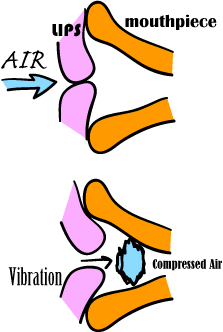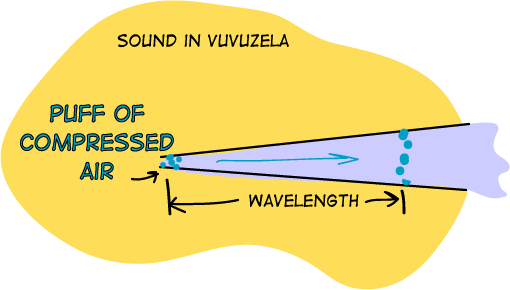I managed to avoid seeing most of the World Cup, but it was hard to avoid hearing it. In a restaurant/pub with a game on, I almost thought we were being attacked by Africanized bees. That, of course, was the vuvuzela, the notorious plastic horns of the World Cup. I decided to find out what all the noise was about.
Bad Noise is in the Brain of the Behearer
We seem more sensitive to certain kinds of sounds — ones that are louder, higher and more like vowel sounds. A vuvuzela hits all these notes, so a stadium of people playing them becomes an auditory perfect storm.
The Hear and Ow
Louder sounds are harder to tune out. A vuvuzela can generate 128 decibels, which is comparable to a jet engine at a hundred paces. That would be dangerous to your hearing if exposed to it for long.
Taking the High Road
We are more sensitive to higher frequencies because of the shape of our ear and how our brain works. Like a baby crying. It reminds me of when we had the Molson Indy whizzing around Science World.
Say Wha?
Vowel sounds are parts of words and we are looking for meaning to come of it. But the vuvuzela is full of sound and fury, signifying nothing. This might remind you of life, if you're MacBeth or some conversations at parties, if you're me.
My Lips are Sealed (Almost)
If you blow with your lips held tight, a series of air puffs escape as your lips vibrate, quickly opening and closing. The energy in the air coming out through a small opening is more concentrated, like water squirting out a hose when you partly cover the end. So this helps make the sound louder. Speaking of hoses, I've heard a professional trumpet player play a tune with a mouth piece attached to some garden hose and a funnel. Trumpet players can control the sounds they make. World Cup fans, not so much.

Sounds Like Size Matters
Depending on how quickly your lips flap, you get different sounds. The puffs travel through the air and the space between the puffs is the wavelength. Faster vibrations produce a higher frequency of air puffs, resulting in a shorter wavelength between them. Depending on the size of tube you're using, some wavelengths will fit better than others. Resonating in the tube makes it seem louder. A vuvuzela is about 60 cm long and works best for a frequency of about 233 Hertz (vibrations per second), or a B flat. Harmonics, or whole multiples of this note (higher B flats) also fit, so you get a mix of frequencies.

The Shape of Sounds to Come
The vuvuzela is slightly conical. This means the air is expanding as it goes along the length. The volume inside is a greater than for a cylindrical tube which seems to allow for more harmonics at higher frequencies, to which we are more sensitive. As well, the flare at the end of horn also helps radiate the higher frequencies.
Share your notes on the physics and perception of the vuvuzela, if you don't mind blowing your own horn.
For More...
Check out some exhibits on sound and waves in the Eureka gallery.
How air bounces around to make sounds in different kinds of tubes | Sound | Science World Resources